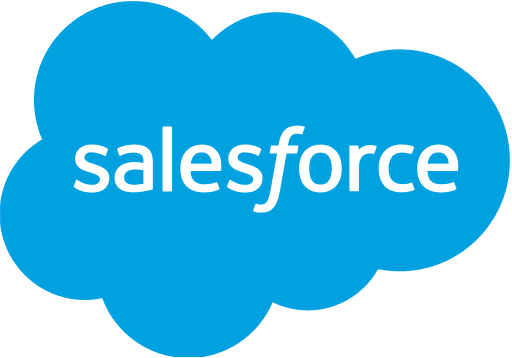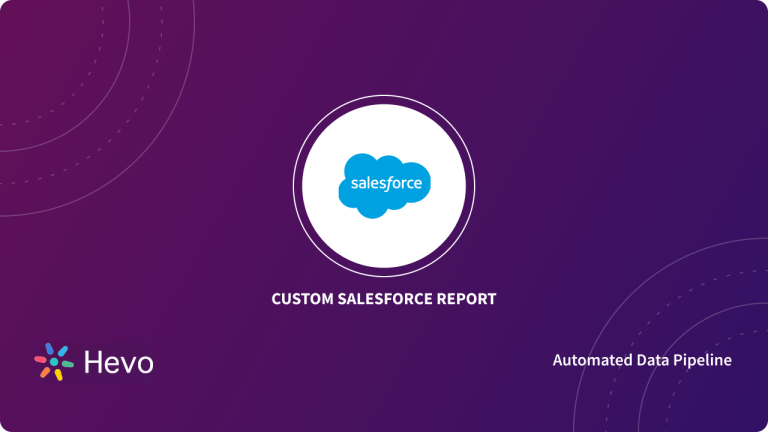Salesforce is a completely managed Cloud-based Customer Relationship Management software offered on a subscription-based payment. Salesforce helps organizations to perform Lead Management, Invoice Processing, Account Management, and Customer Support through their all-in-one solution. Data in Salesforce can be expressed as Reports and Dashboards that aid the senior management to track the progress of activities and make decisions based on them.
Salesforce Dashboards are one of the biggest unique selling points of the product. Apart from the default Dashboards that come with the service, Salesforce developers have also provided several add-on Dashboards that can be downloaded for free from the Salesforce application store that is named AppExchange. Beyond this, the application store also contains numerous paid Dashboards provided by third-party developers.
This article will introduce you to Salesforce Dashboards and will explain the best Salesforce Dashboards that are currently available. Read along to learn more about these Dashboards and decide which one suits you the best!
Effortlessly manage and migrate your sharded Salesforce data with Hevo. Hevo supports Salesforce as one of its 150+ data sources, ensuring seamless data integration and real-time synchronization.
- No-Code Solution: Easily connect and manage your Salesforce data without writing a single line of code.
- Flexible Transformations: Use drag-and-drop tools or custom scripts for data transformation.
- Real-Time Sync: Keep your destination data warehouse updated in real time.
- Auto-Schema Mapping: Automatically handle schema mapping for a smooth data transfer.
Join over 2000 satisfied customers, including companies like Voiceflow and Playtomic, who trust Hevo for their data integration needs. Check out why Hevo is rated 4.7 stars on Capterra.
Get Started with Hevo for FreeTable of Contents
Introduction to Salesforce
Salesforce is a widely used Cloud-based Customer Relationship Management (CRM) software that is designed to help an organization manage its Sales and Customer data. In addition, it has tools to customize its built-in features such as Data Structures and User Interfaces to suit your business needs. Since it is Cloud-based, it offers users a lot of flexibility and scalability. In addition, Salesforce acts as an essential data source for Data Warehouses like Redshift and Snowflake.
Key Features of Salesforce
The following features make Salesforce popular in today’s market:
- Simple Set-up: Unlike most CRMs, which typically take up to a year to install and fully deploy, Salesforce can be easily set up from scratch in just a few weeks.
- Small Learning Curve:Companies typically spend more time using it and relatively less time understanding how Salesforce works.
- Efficient: Salesforce is easy to use and can be customized by companies according to their needs. Thanks to this feature, users find the tool very useful.
- Customized Planning: Salesforce gives you enough data for each Lead so your Sales Team can tailor their approach to each Lead. This will increase your chances of success and your clients will also receive a personal touch.
To learn more about Salesforce, visit here.
Introduction to Salesforce Dashboards
A Dashboard in Salesforce is an abstraction over Reports. A Dashboard needs at least a report to pull its data from. Salesforce Dashboards can be based on multiple Reports too. Salesforce provides granular control over who has access to viewing specific Dashboards and Reports. Sharing is accomplished through folders. People who have access to the folders in which a Dashboard exists can view it. Folder access permissions can be configured from the Salesforce administration panel.
Building a custom Dashboard is as easy as dragging and dropping components based on underlying reports. Each component is a metric or a chart. Default Salesforce Dashboards fall broadly into 2 categories:
- Sales and Marketing Dashboards: These Marketing Dashboards enable people in a variety of Sales and Marketing roles to monitor the state of Campaigns, Leads, and Business Opportunities for their organization, team, or themselves.
- Customer service Dashboards: These Dashboards enable people with different support and service roles to track customer requests for their organization and agency, including trends and KPIs.
To learn more about Salesforce Dashboards, visit here.
Best Salesforce Dashboards
Let us now look into a few of the popular Salesforce Dashboards that can make a difference to the day-to-day life of a senior manager in charge of Sales or Customers:
- Forecast Dashboard
- Sales Funnel Dashboard
- Leaderboard Dashboard
- Pipeline Trend
- Executive Daily View Dashboard
- Marketing Executive Dashboard
- Customer Service Supervisor Dashboard
- Service KPIs Dashboard
- Age of Leads Dashboard
- Sales Activities KPI Dashboard
Dashboards 1: Forecast Dashboard

The Forecast Dashboard helps organizations get a clear picture of the Sales Forecasts for the quarter and help them track where they are, concerning their targets. It helps companies to train and coach their employees by holding them accountable for meeting the forecasts.
The key focus areas of this Dashboard are Sales Quotas and Quota Attainment Rates. It uses multiple underlying reports related to Forecasts by Employees, Forecast by a Representative, Forecast by the Team, Forecast by Stage, and Forecast by Territory is used in generating this Salesforce Dashboard.
Dashboards 2: Sales Funnel Dashboard
The Sales Funnel Dashboard has traditionally been used to understand the value of Sales in various stages. The initial stage of any Sales lead is the Prospect Stage. The Leads then get into the Investigation Stage and proposals are made based on the investigation. The last stage before conversion is the Negotiation Stage. As the name suggests, this chart is mostly funnel-shaped. The variation of this chart stems from their values in different stages and companies use this information to ascertain whether their prospects are of big enough value to meet their Forecasts.
Dashboards 3: Leaderboard Dashboard

The primary purpose of this dashboard is to motivate your Sales Employees by adding a competitive spirit to their day-to-day work. The Dashboards display the current top Salesman by Revenue. The main focus of this Dashboard is Sales Performance and helping Sales Managers keep close control over their teams. The underlying reports include closed/won opportunities by revenue, the number of demos, etc.
Dashboards 4: Pipeline Trend
This Dashboard shows the size of the Pipeline in various stages for each month. It helps organizations to keep track of whether their Sales Pipeline is increasing or decreasing. The main focus of this Dashboard is to take necessary actions and motivate the Marketing and Sales Teams if the trend appears to be in a downward trajectory.
Dashboards 5: Executive Daily View Dashboard

This Dashboard helps the senior managers in their day-to-day work aggregating data from various Sales Representatives and Territories. It provides a snapshot of the status of all Sales activities under your control at any point in time. It helps you to pinpoint low-performing employees or sectors and motivate them. It can also help you in discussions with your senior management in deciding the budget allocations for each sector.
Dashboards 6: Marketing Executive Dashboard

The Marketing Executive Dashboard is meant for senior management to keep track of the Marketing activities. It helps them to discover what difference is made by Marketing Campaigns in generating and converting Leads. This Dashboard is a great tool to coach and mentor Marketing Analysts and holds them accountable for the effectiveness of their Marketing activities. Underlying reports include Lead, Sales, Inventory Levels, Billing Status, etc. This report is part of the built-in Dashboards provided by Salesforce.
Dashboards 7: Customer Service Supervisor Dashboard
This report is tailor-made for the Managers who lead Customer Service Teams. It gives them a direct view of the performance of their team in resolving customer issues. The Dashboard displays the top performing agents, the average age of the open cases, open cases by priority, etc.
Dashboards 8: Service KPIs Dashboard
This Dashboard is a very helpful tool for senior managers in charge of providing Customer Service. It differs from the previous Dashboard because that Dashboard was more aligned towards a team’s performance, while this works based on the entire organization’s service KPIs. It provides insights into key metrics like the trend of closed cases, cases closed by channel type, case distribution by type and priority, etc.
Dashboards 9: Age of Leads Dashboard
Even though this is technically a report rather than a Dashboard, many organizations use this report in Dashboard mode because of the criticality of information conveyed by this report. It shows the age of the Leads and activities in each Lead. This helps the senior management to assess the quality of the Leads in the Sales Funnel. It also helps them understand whether the Sales Executives have been prompt in taking action about a Lead.
Dashboards 10: Sales Activities KPI Dashboard

This Dashboard provides organizational-level metrics for analyzing the performance of the Sales Team in profitability-related areas like Margin, Dealer Discounts, Sales Activities, the Pace of Conversion, etc. Such metrics are key to understand whether secured sales make a difference in the profit of the company.
Conclusion
This article introduced you to Salesforce and Salesforce Dashboards. Also, it explained the 10 most popular Salesforce Dashboards that are used in the business world today. These Dashboards are developed to serve different purposes and you must choose a Dashboard depending on your requirements.
As evident from the above sections, Salesforce provides a great set of dashboards that can help a lot in the day-to-day activities of your lower-level employees as well as senior management. A small limitation of the Dashboards is that they are mostly based on values directly available from the Salesforce database and there is limited scope for transforming the values or combining this data to your transactional database, to form even more insightful dashboards. A solution to that problem is using proper visualization tools like Tableau or Marketo along with an ETL tool. For any information on Salesforce Facebook Integration, you can visit the former links.
If you go down this path, Hevo can help you to get data from Salesforce, combine it with different data sources, and generate more insightful dashboards. Hevo Data provides its users with a simpler platform for integrating data for analysis. It is a no-code data pipeline that can help you combine data from 150+ sources (Including Free Sources like Salesforce) and visualize it in your BI tool. It provides you with a consistent and reliable solution to managing data in real-time, ensuring that you always have analysis-ready data in your desired destination. Your job will be to focus on key business needs and perform insightful analysis using BI tools.
FAQ on Salesforce Dashboard
What is the Salesforce dashboard?
A Salesforce dashboard is a visual representation of key metrics and data insights, displayed through charts, graphs, and tables. It allows users to monitor performance and track business goals.
What is the difference between a report and a dashboard in Salesforce?
Reports display data in a tabular format, providing detailed insights, while dashboards visualize data from reports in a graphical format, making it easier to interpret trends and metrics.
How many types of dashboards are there in Salesforce?
Salesforce offers several dashboard types, including dynamic, static, and analytical dashboards, which serve different purposes for displaying real-time or aggregated data.












